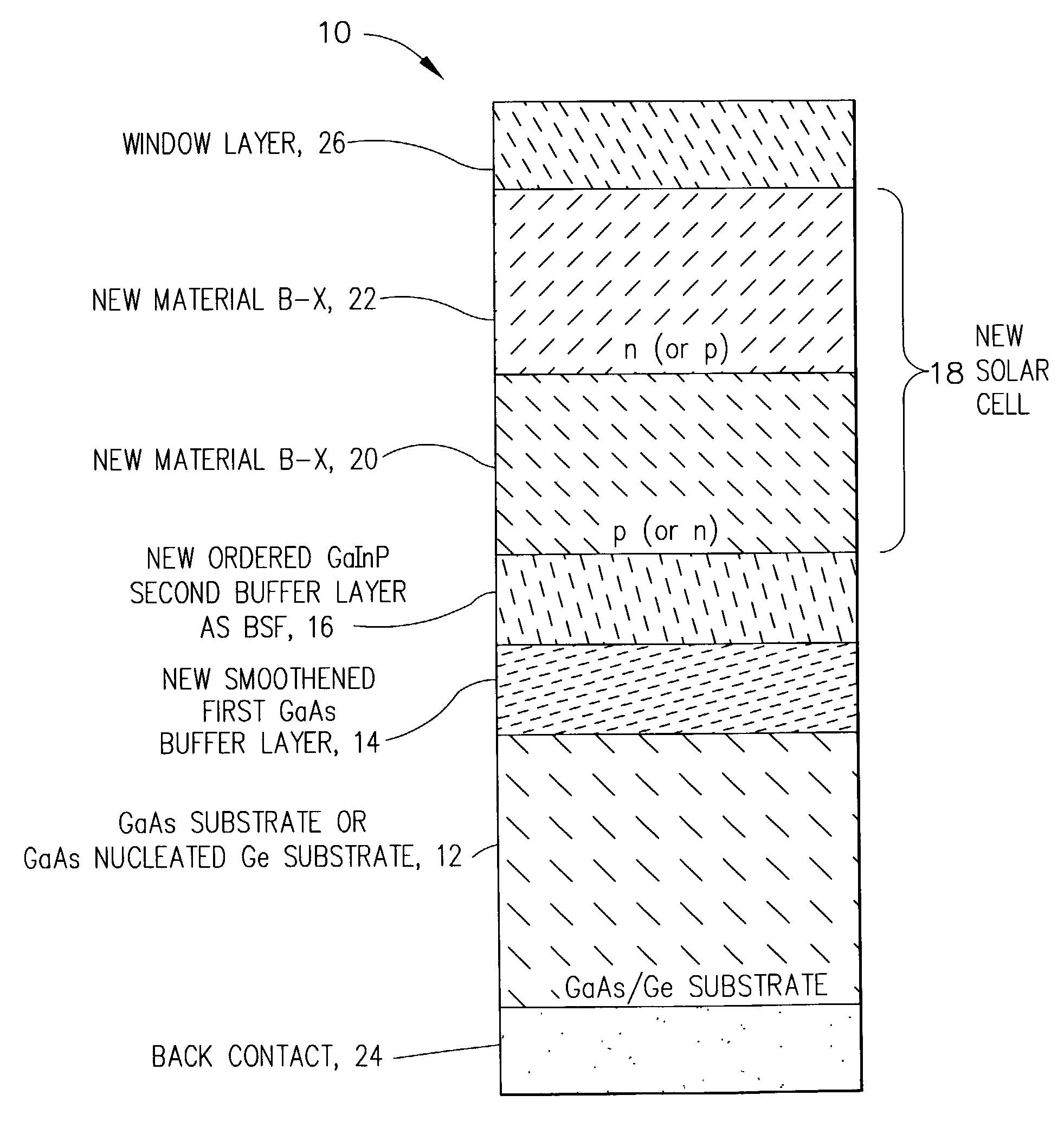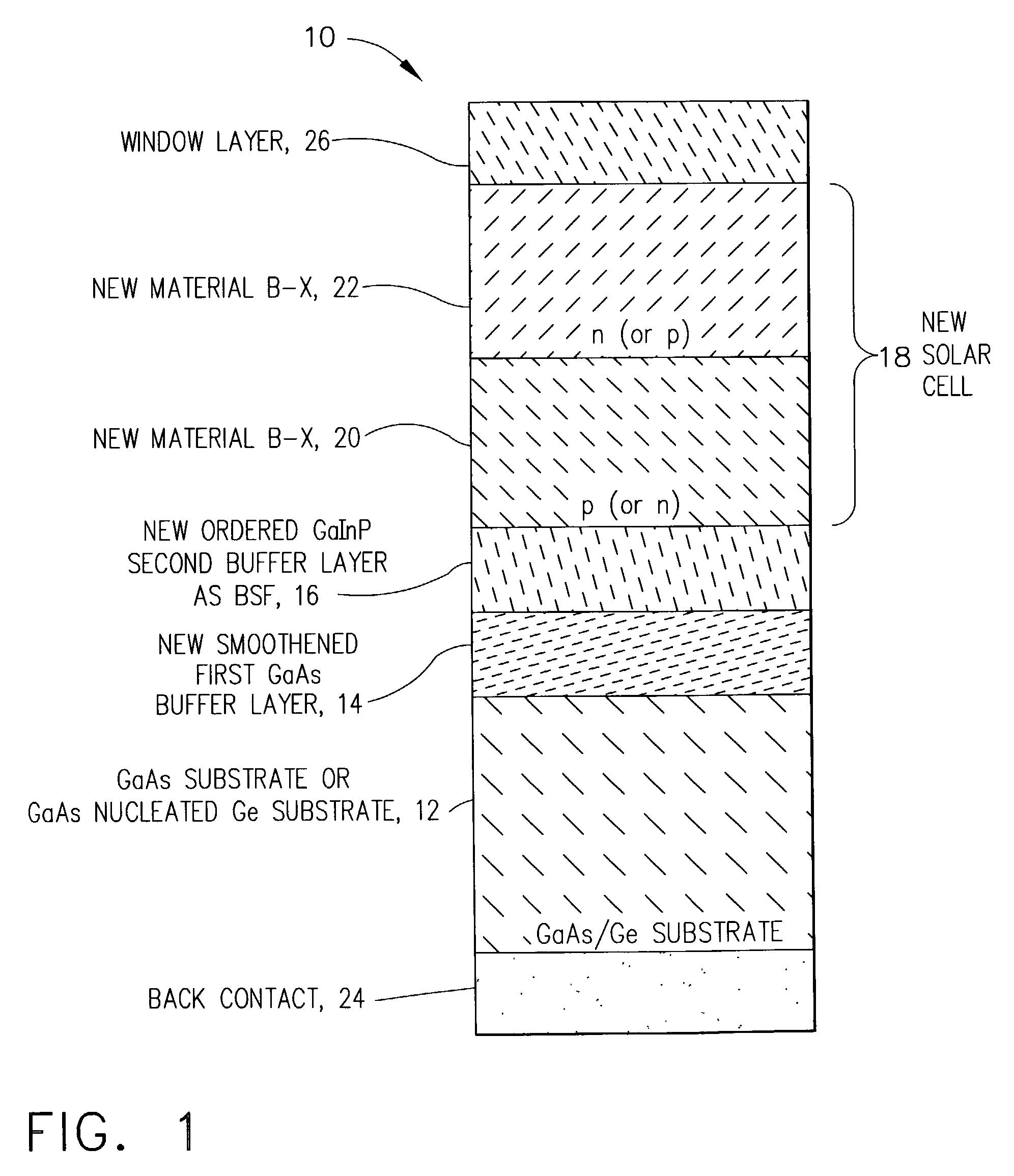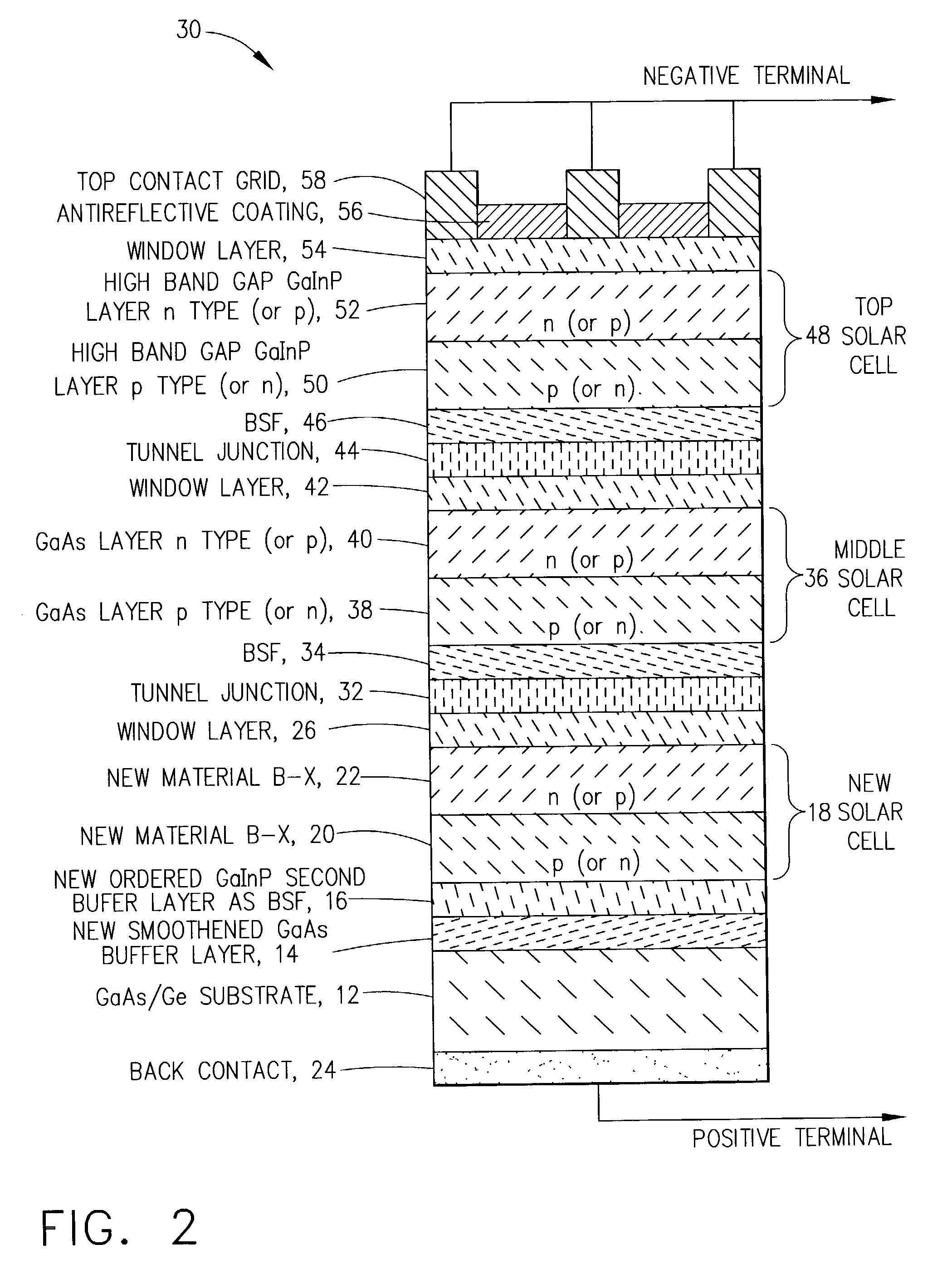Multi-junction photovoltaic cell having buffer layers for the growth of single crystal boron compounds
a photovoltaic cell and multi-junction technology, applied in the field of photovoltaic cells, can solve the problems of increasing the cost of a launch more than linearly, increasing the cost of a launch, and increasing the cost per watt of electrical power generation capacity of photovoltaic systems
- Summary
- Abstract
- Description
- Claims
- Application Information
AI Technical Summary
Benefits of technology
Problems solved by technology
Method used
Image
Examples
Embodiment Construction
[0033]The following detailed description is of the best currently contemplated modes of carrying out the invention. The description is not to be taken in a limiting sense, but is made merely for the purpose of illustrating the general principles of the invention, since the scope of the invention is best defined by the appended claims.
[0034]The present invention generally provides two novel buffer layers prior to the growth of boron-containing compounds such as BGaAs, BGaInAs, and BGaAsSb. One of the buffer layers may be atomically smooth while the other buffer layer may be atomically ordered. An atomically smooth buffer layer can be grown at a first temperature, annealed at a higher temperature, and then cooled at the first temperature, for example. Such an annealing process allows various materials (for example, Ga and As) within the buffer layer to be grown smoothly such that their atomic bonds are properly maintained and contain fewer crystal defects.
[0035]An atomically ordered b...
PUM
 Login to View More
Login to View More Abstract
Description
Claims
Application Information
 Login to View More
Login to View More - R&D
- Intellectual Property
- Life Sciences
- Materials
- Tech Scout
- Unparalleled Data Quality
- Higher Quality Content
- 60% Fewer Hallucinations
Browse by: Latest US Patents, China's latest patents, Technical Efficacy Thesaurus, Application Domain, Technology Topic, Popular Technical Reports.
© 2025 PatSnap. All rights reserved.Legal|Privacy policy|Modern Slavery Act Transparency Statement|Sitemap|About US| Contact US: help@patsnap.com



